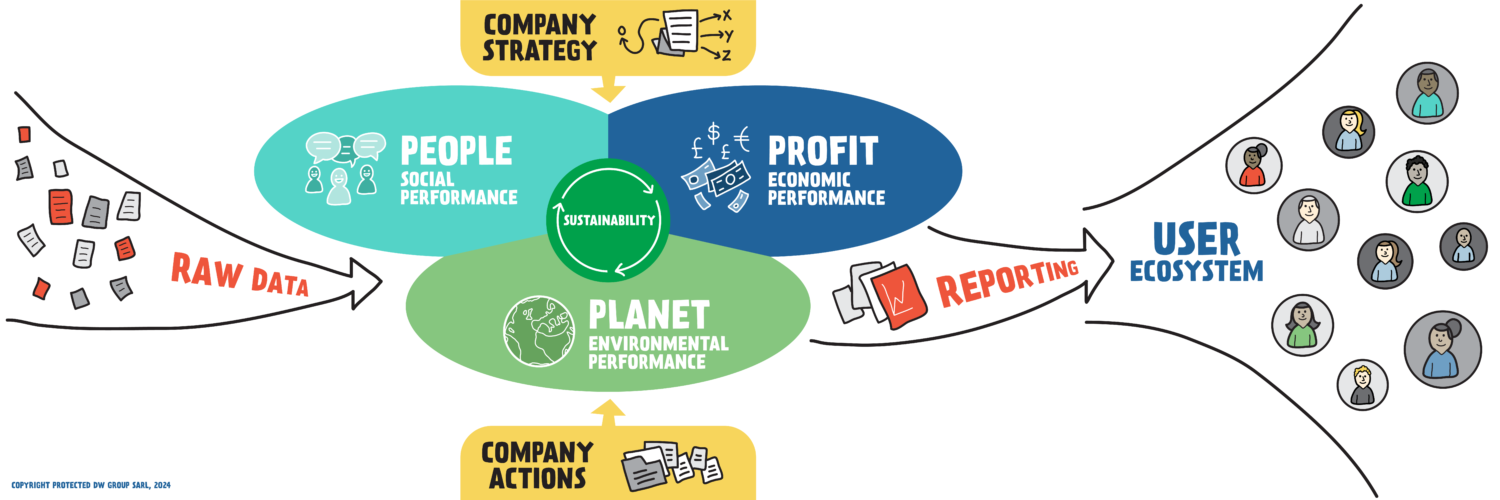
On the eve, figuratively speaking, of mandatory sustainability reporting in most of continental Europe as well as several US states, Canada and a handful of other countries – affected companies are overwhelmingly focusing on ensuring regulatory compliance.
Looking in the Rearview Mirror
History tells us that change journeys take time before they reach their optimal benefit, the Sarbanes-Oxley Act (SOX) is a case in point. The Harvard Business Review’s The Unexpected Benefits of Sarbanes-Oxley (April 2006) found that “the burdens of implementing SOX for the first time, in 2004, were so great that…most entities….could give little time to developing and adopting policies and practices that went beyond literal compliance”. It went on to find that by 2006, “a number of companies…began…to standardize and consolidate key financial processes; eliminate redundant information systems and unify multiple platforms; minimize inconsistencies in data definitions; automate manual processes; reduce the number of handoffs…bring new employees up to speed faster…”. In other words, leaders realized post the initial SOX implementation that real company benefits were there for the cultivating.
The million-dollar question is: will company experience with internal controls over financial information (i.e.: SOX & COSO’s ICFR) repeat itself with sustainability information?
Looking through the Windshield
The question of connectivity between sustainability and finance was explored by ICAEW Insights article Connecting Sustainability and Finance: Information, Performance and Disclosures (July 2024). The authors’ note that “reporting requirements aside, a more fundamental transformation for companies lies in their ability to leverage the insights provided by sustainability information and the power of the finance function to better manage material impacts, risks, and opportunities (sustainability performance) that convert into value creation (financial performance)”. They observe that, today, companies are overwhelmingly in a mindset of regulatory compliance as they prepare for submissions in 2025.
So, where does this leave us?
Finance Connections are Key
Peter Drucker observed “what gets measured gets done”. Which essentially means that when we measure something we have the information necessary to ensure we achieve what we have set out to do. Sustainability management is no exception!
Complying with an information disclosure requirement is a far cry from embedding sustainability management as an operating or strategic lever. Let’s consider water, specifically water management.

The underlying opportunity for companies materializes once they transition away from merely reporting on water usage to genuinely evaluating capture, treatment and reuse opportunities (the results of which, of course, are reported). The implications are a lower utility cost of water and higher public relations value manifesting in higher revenues, greater capital market access and a lower cost of capital.
Achieving these opportunities requires linkage between operational and finance management – minimally from R&D, product manufacturing, environmental affairs, procurement and finance in the water usage example. It means redesigning operational processes, organizational matrices and developing shared performance metrics to facilitate these new interactions.
Starting the Journey One Step at a Time
The connectivity question best asked is: how do I start this organizational evolution?
It is from this point that connectivity will be embedded within processes, systems and data – so that it becomes business as usual where sustainability matters are simply a requirement in decision-making, just like reasonable profit already is.
Image credit: Adobe Images
